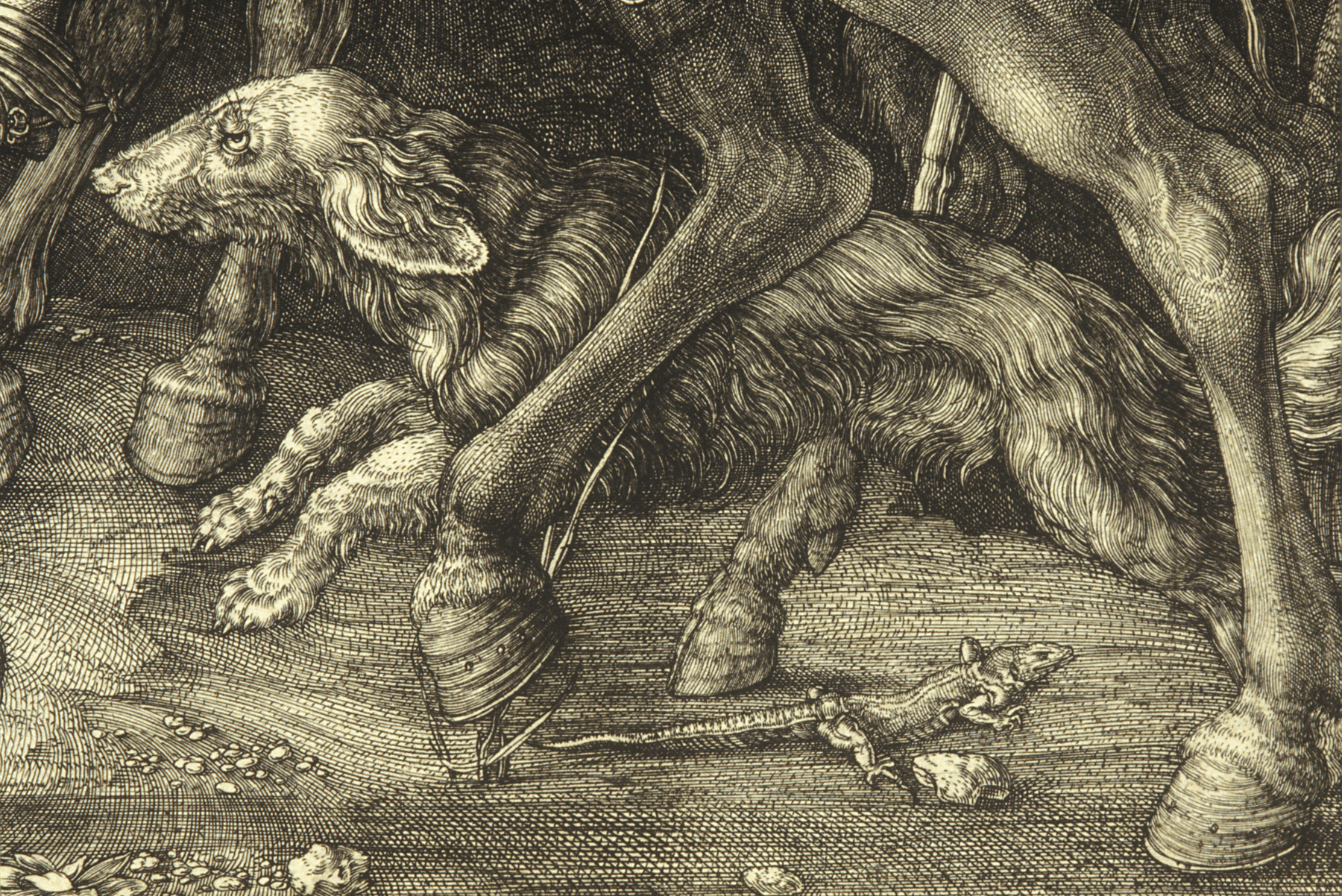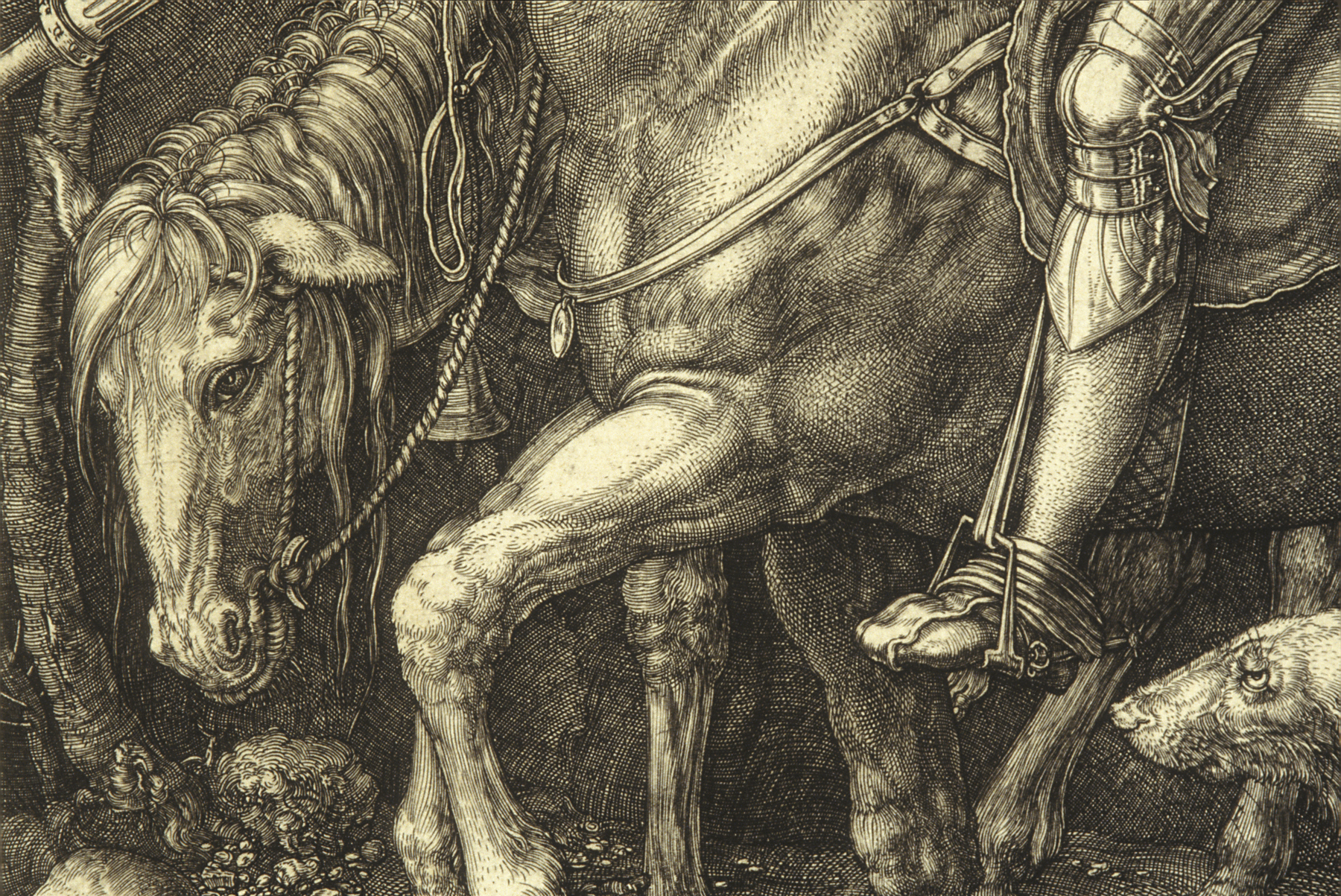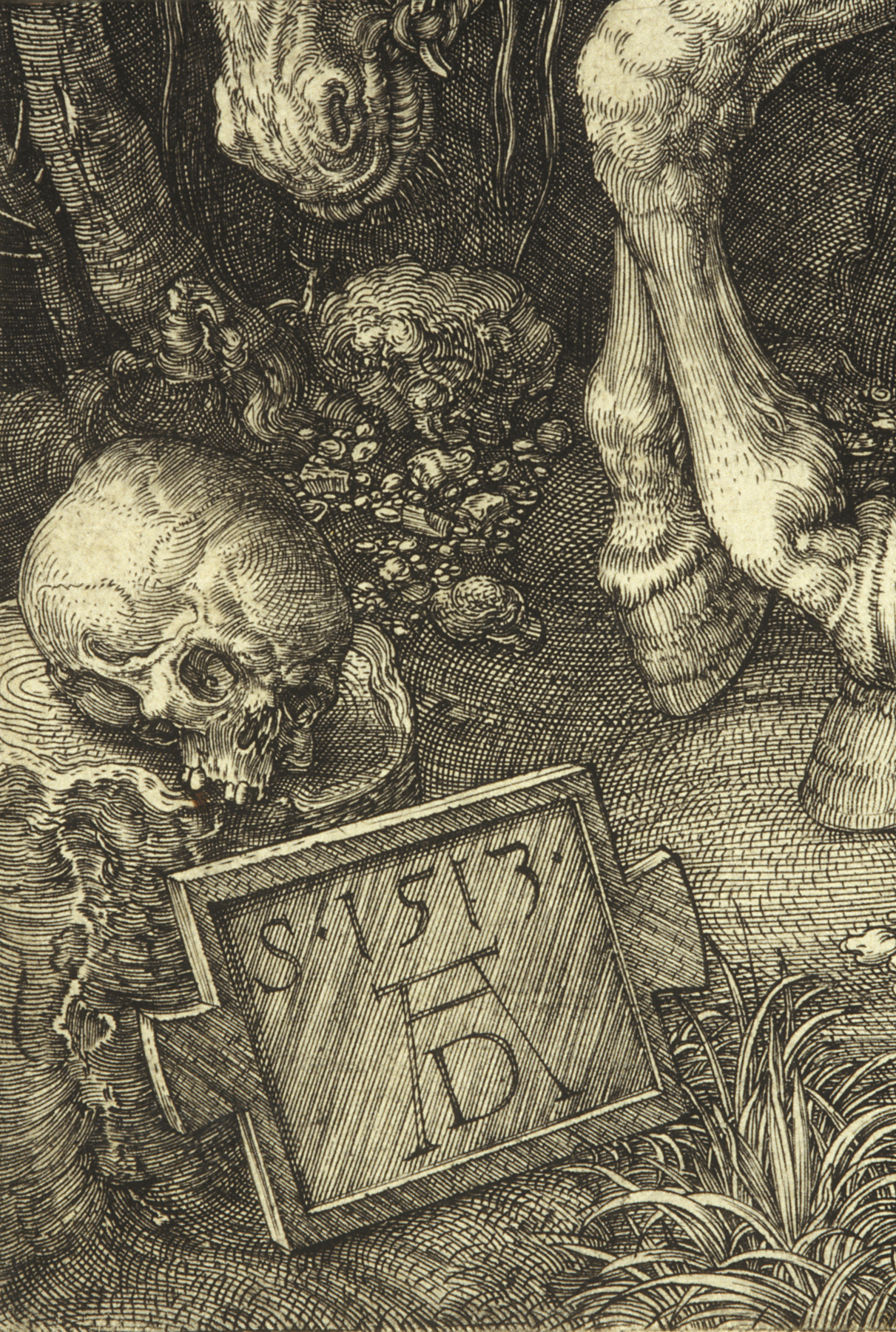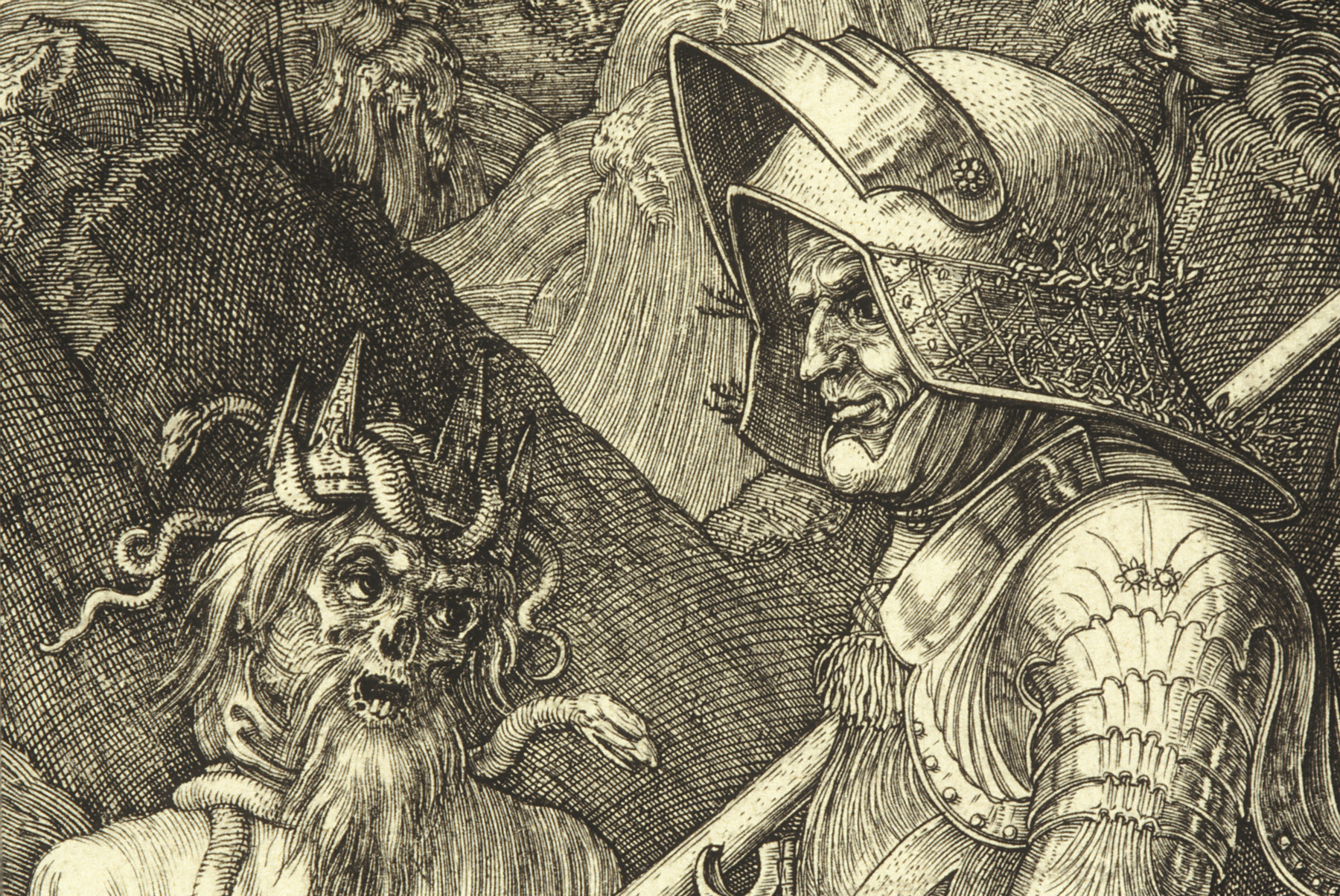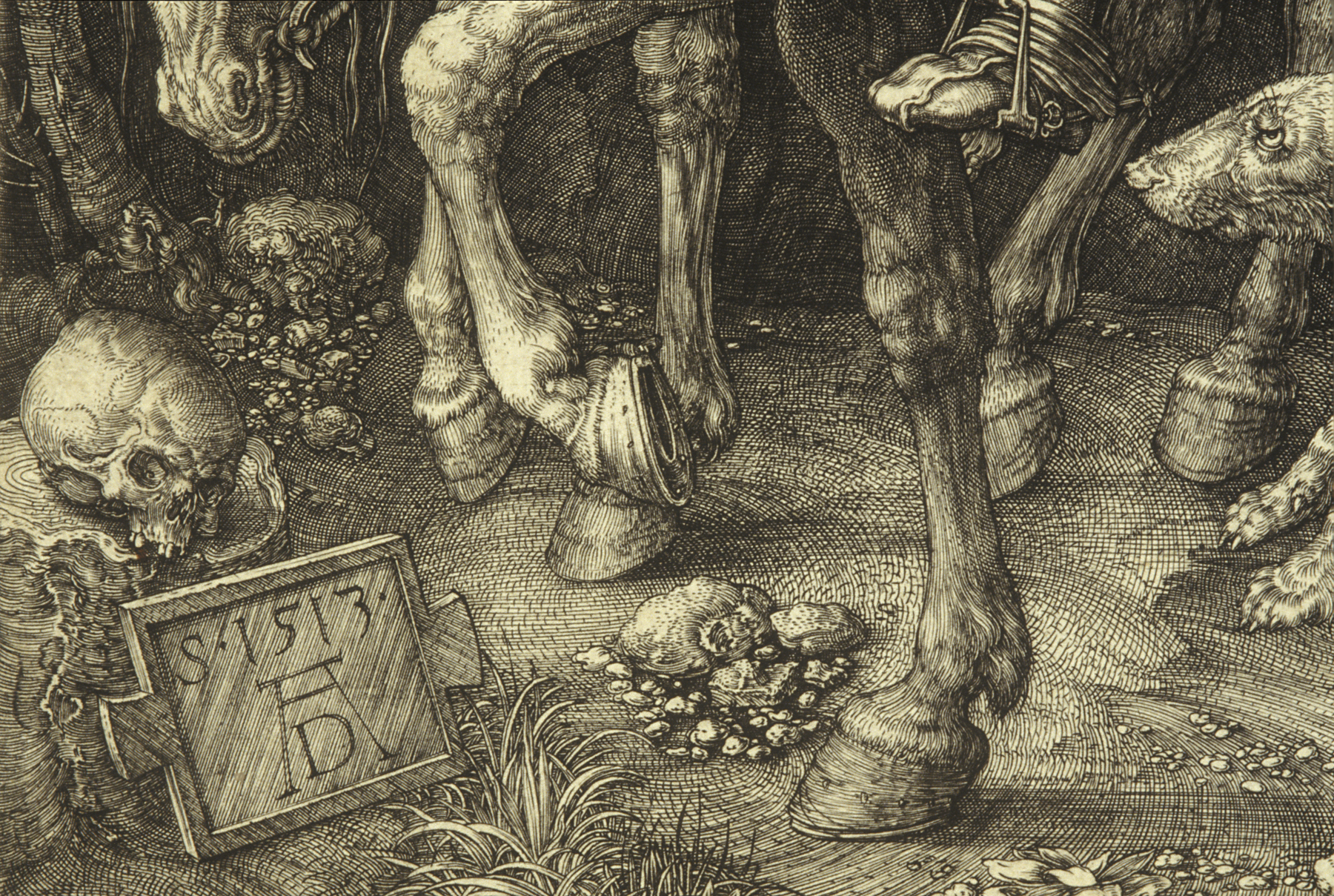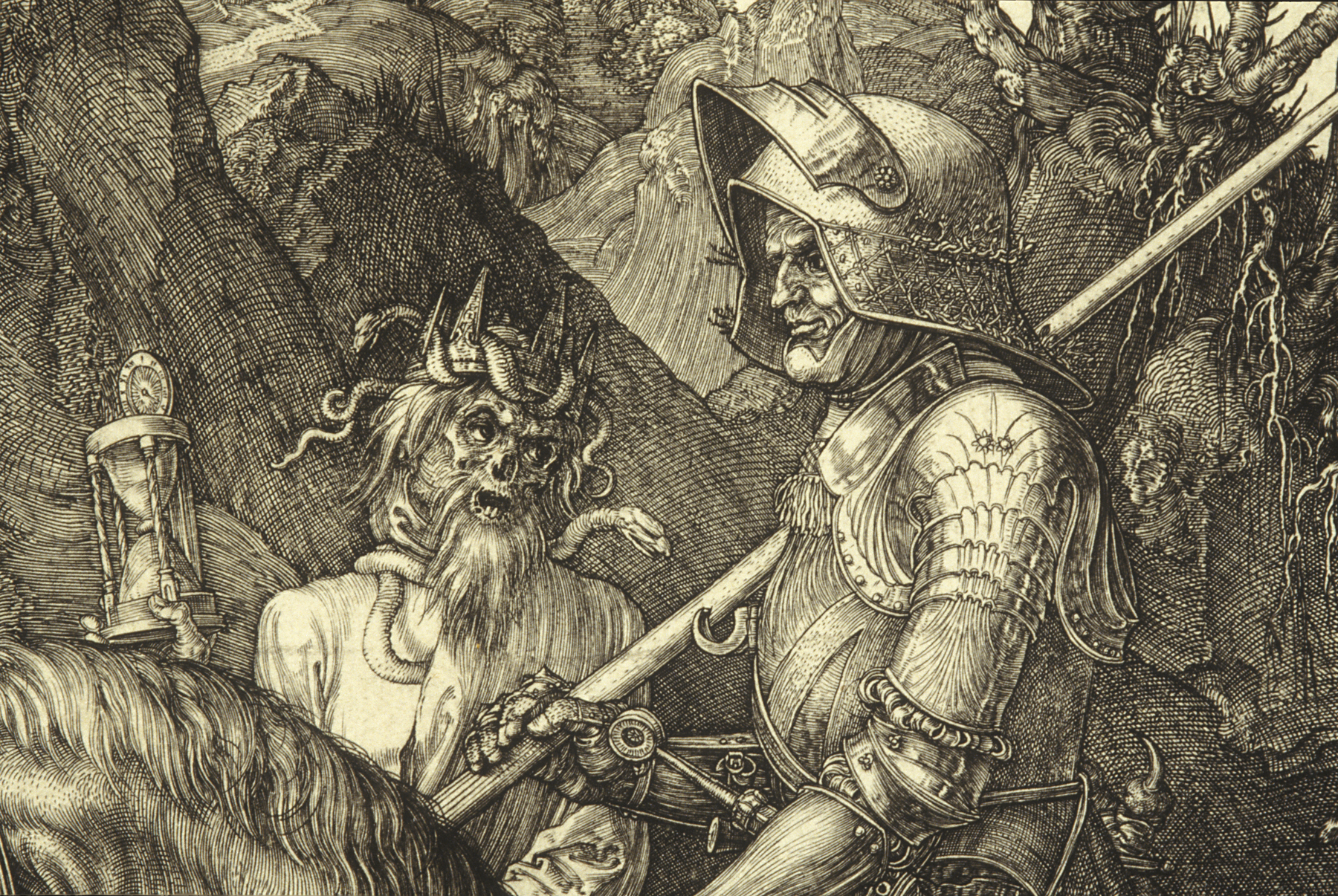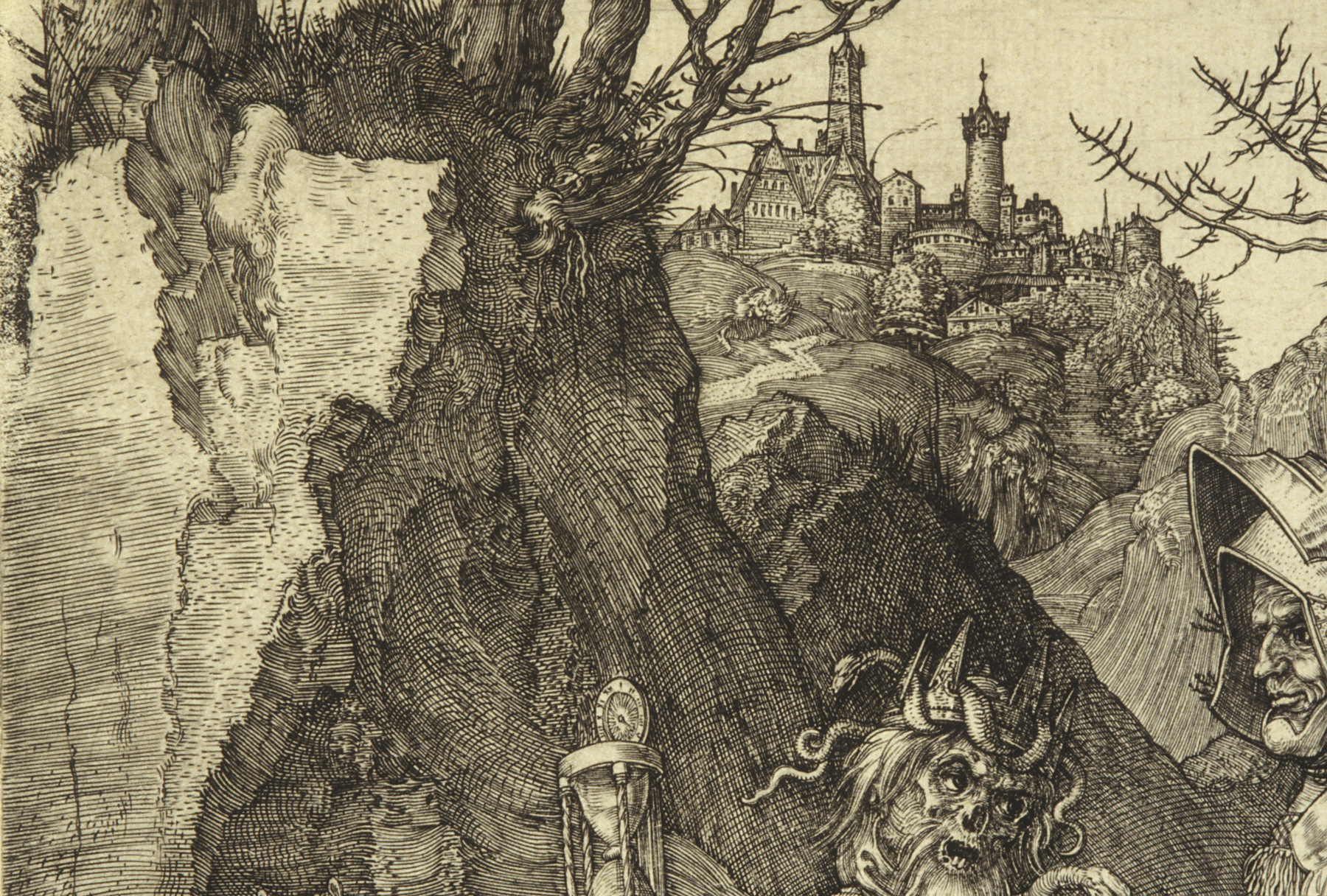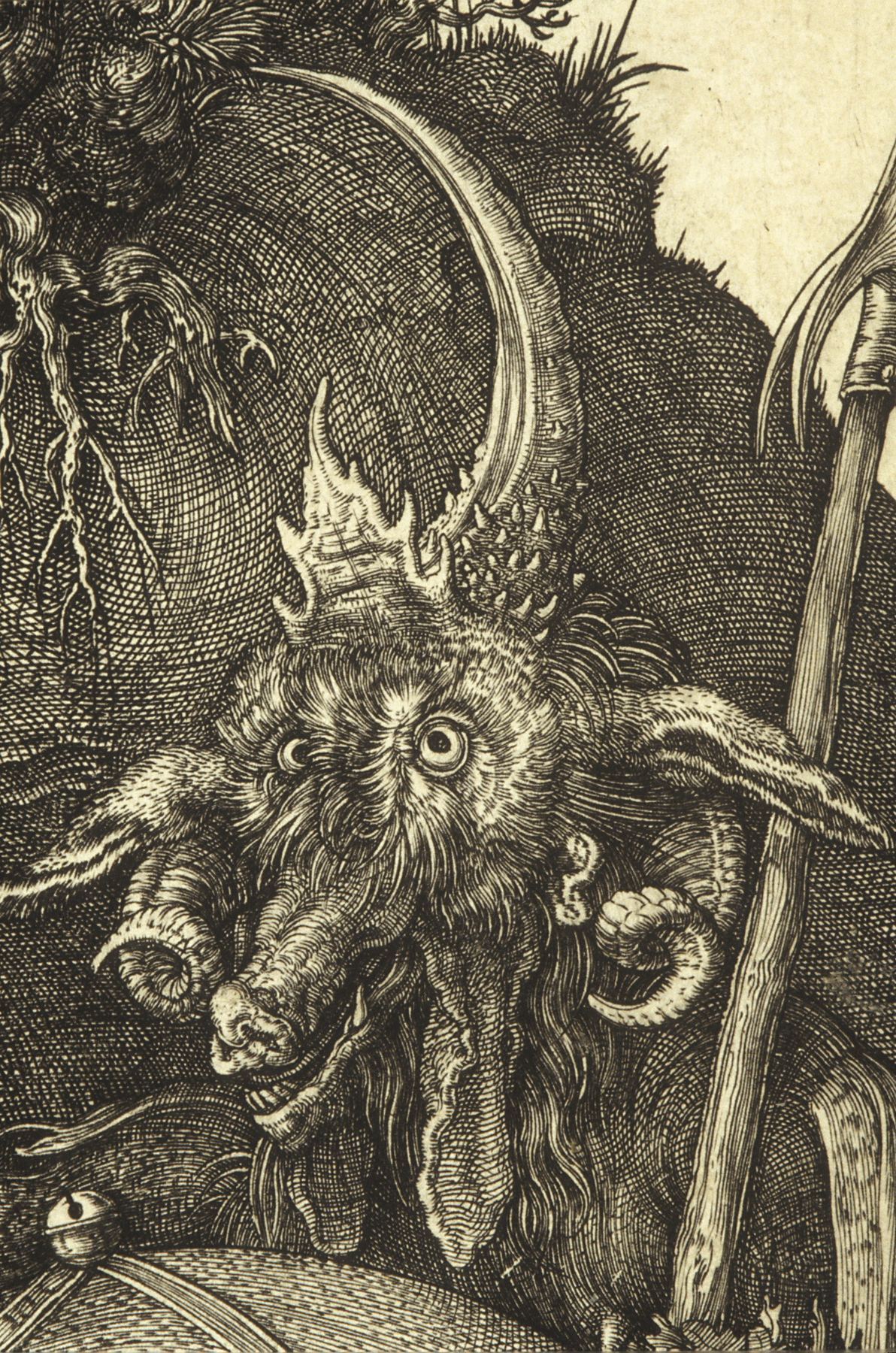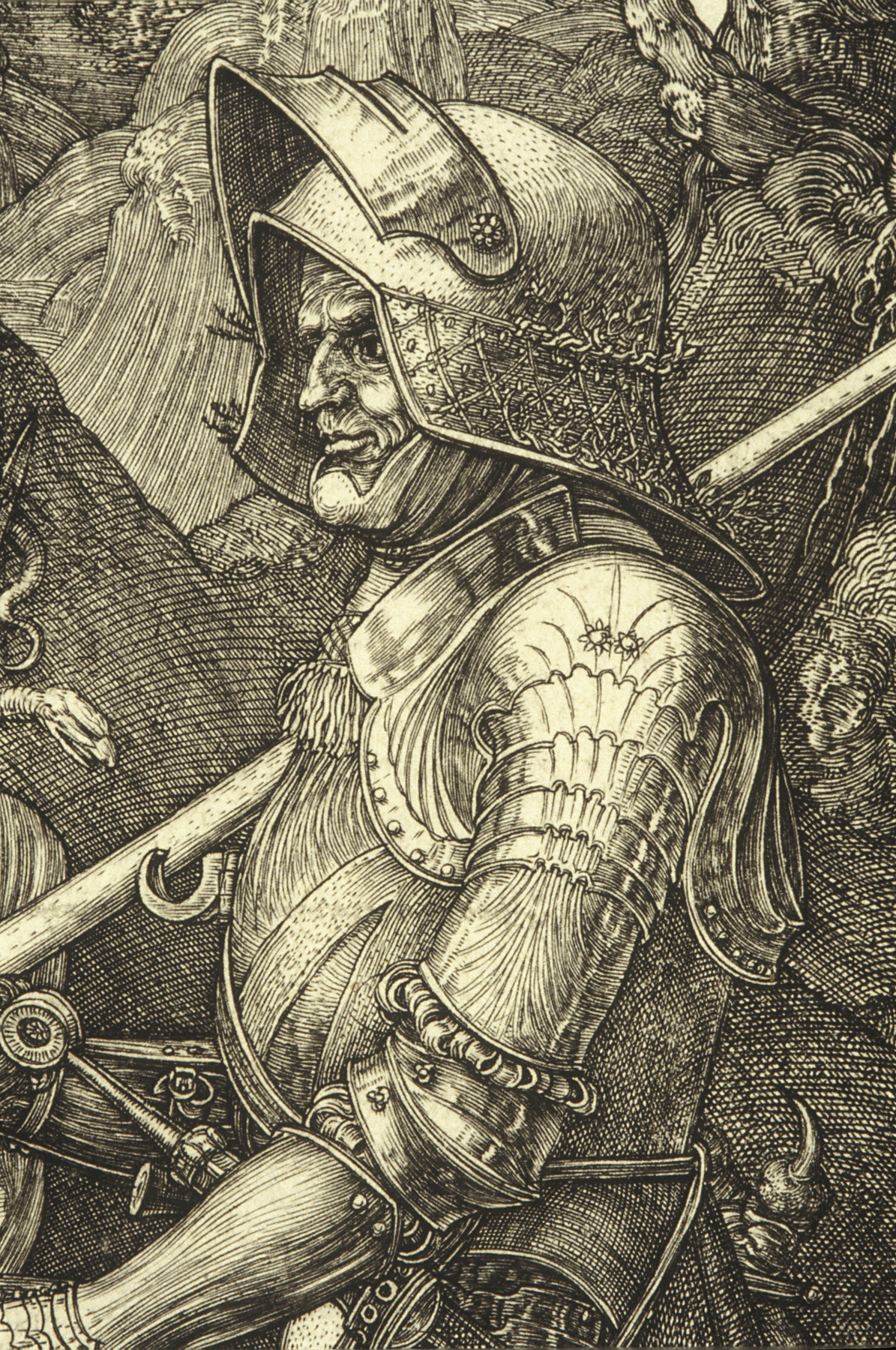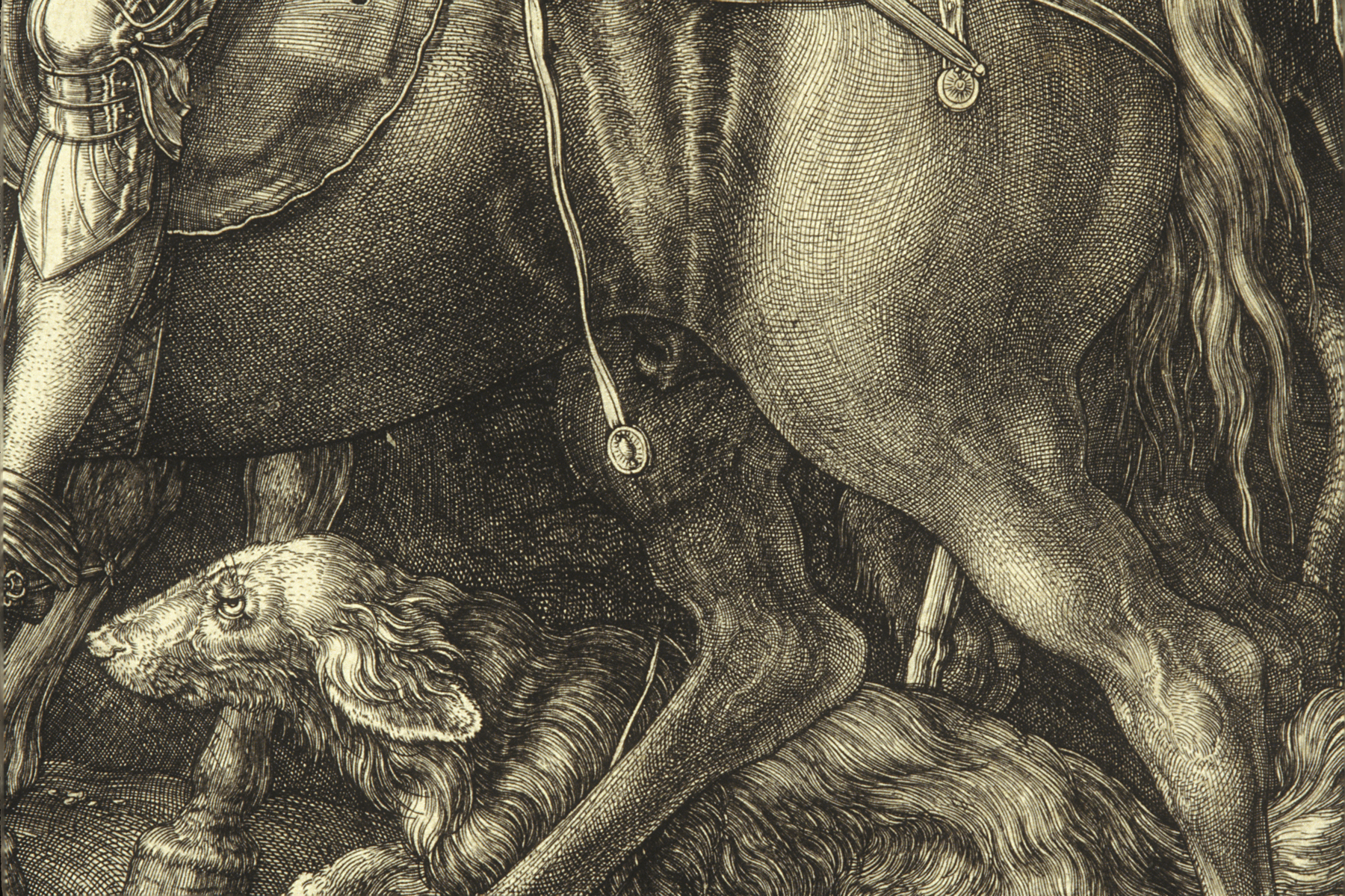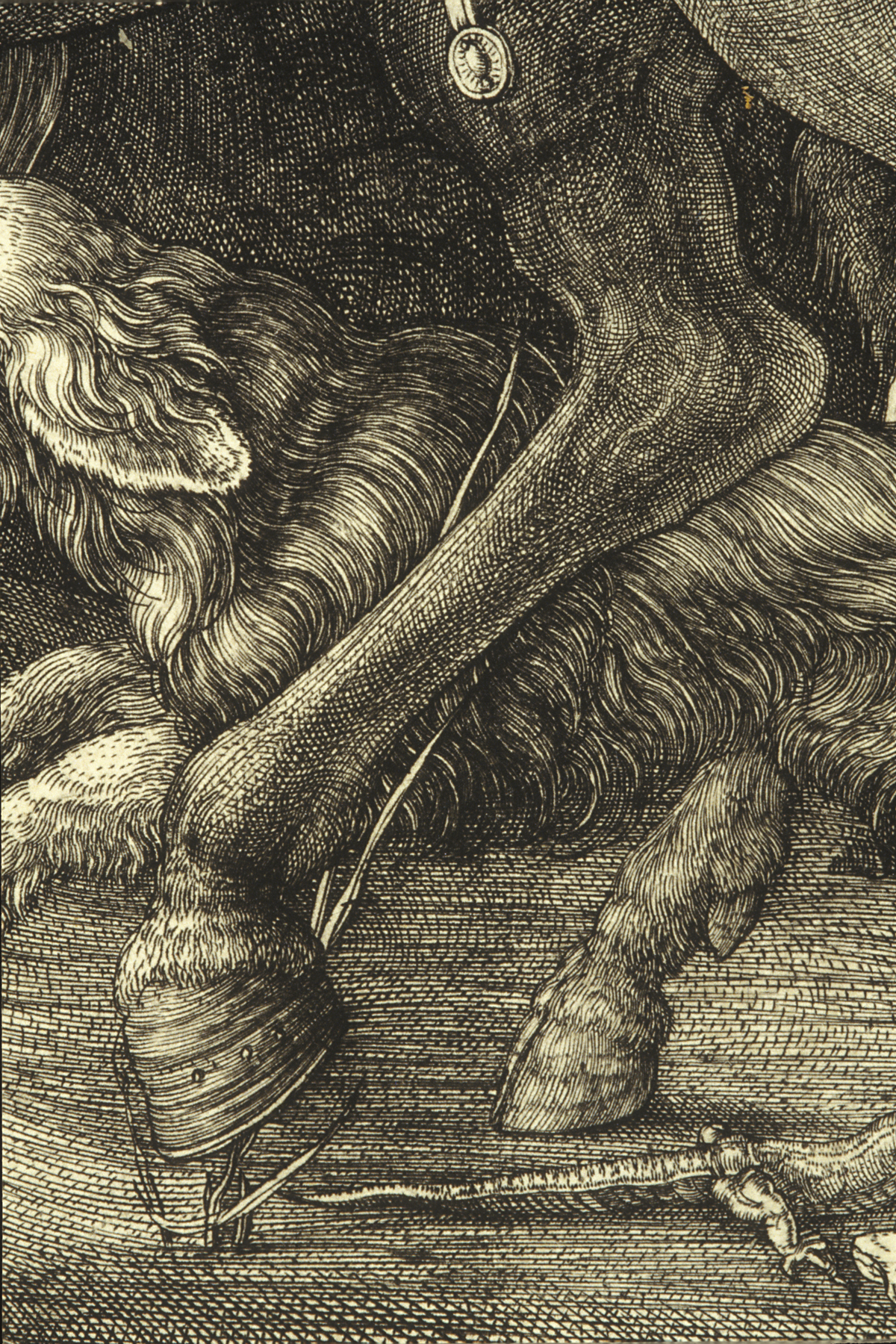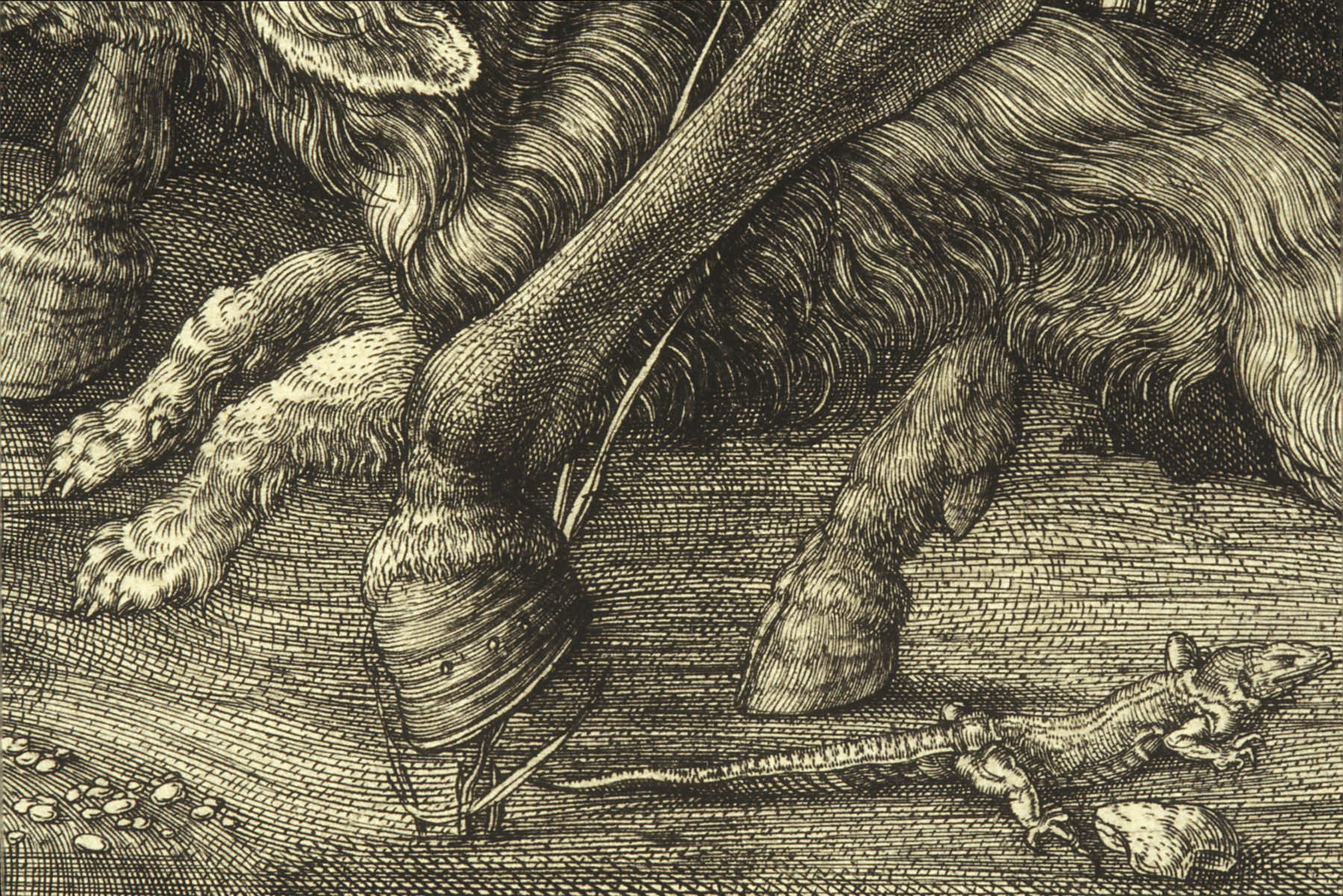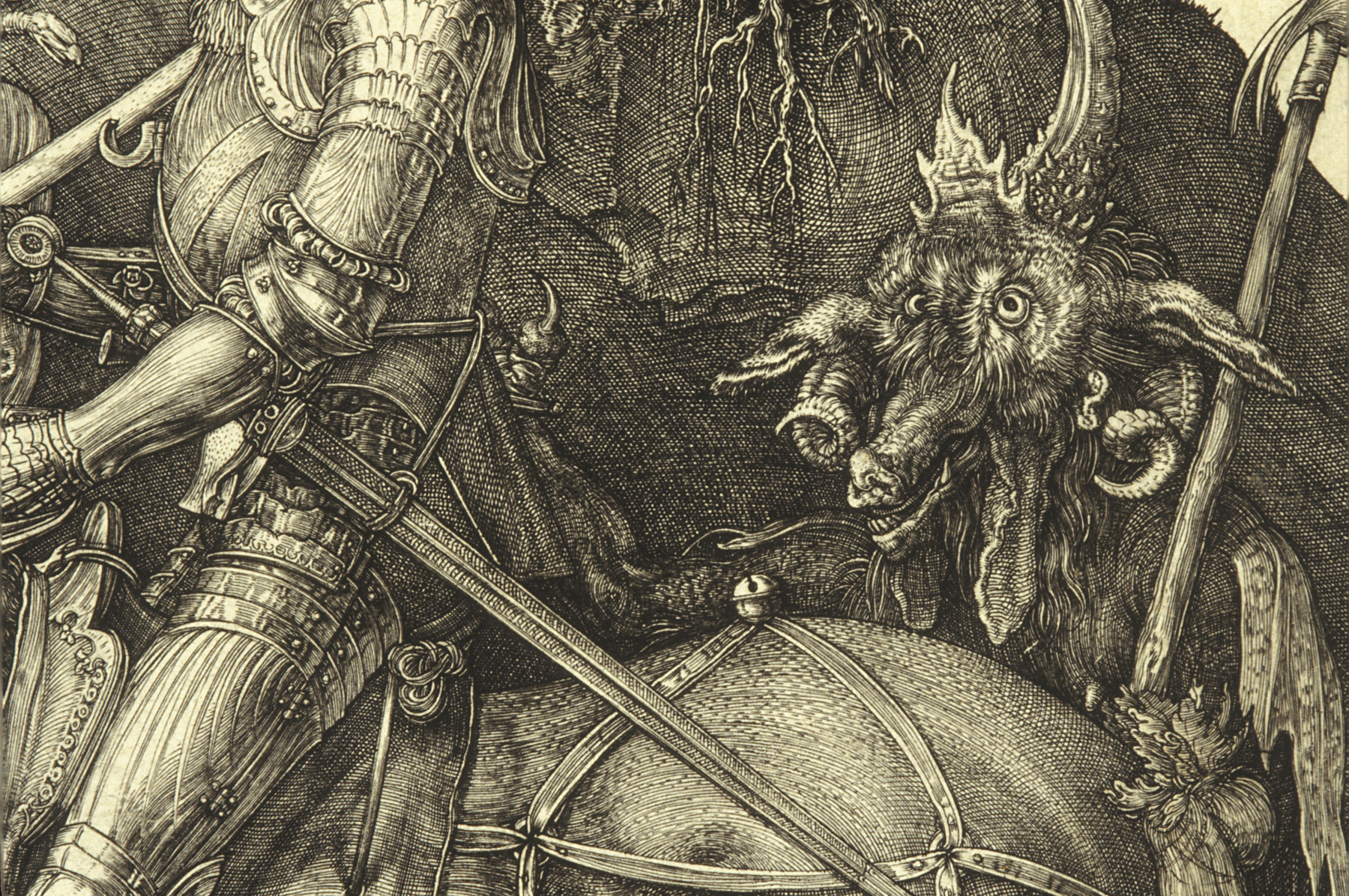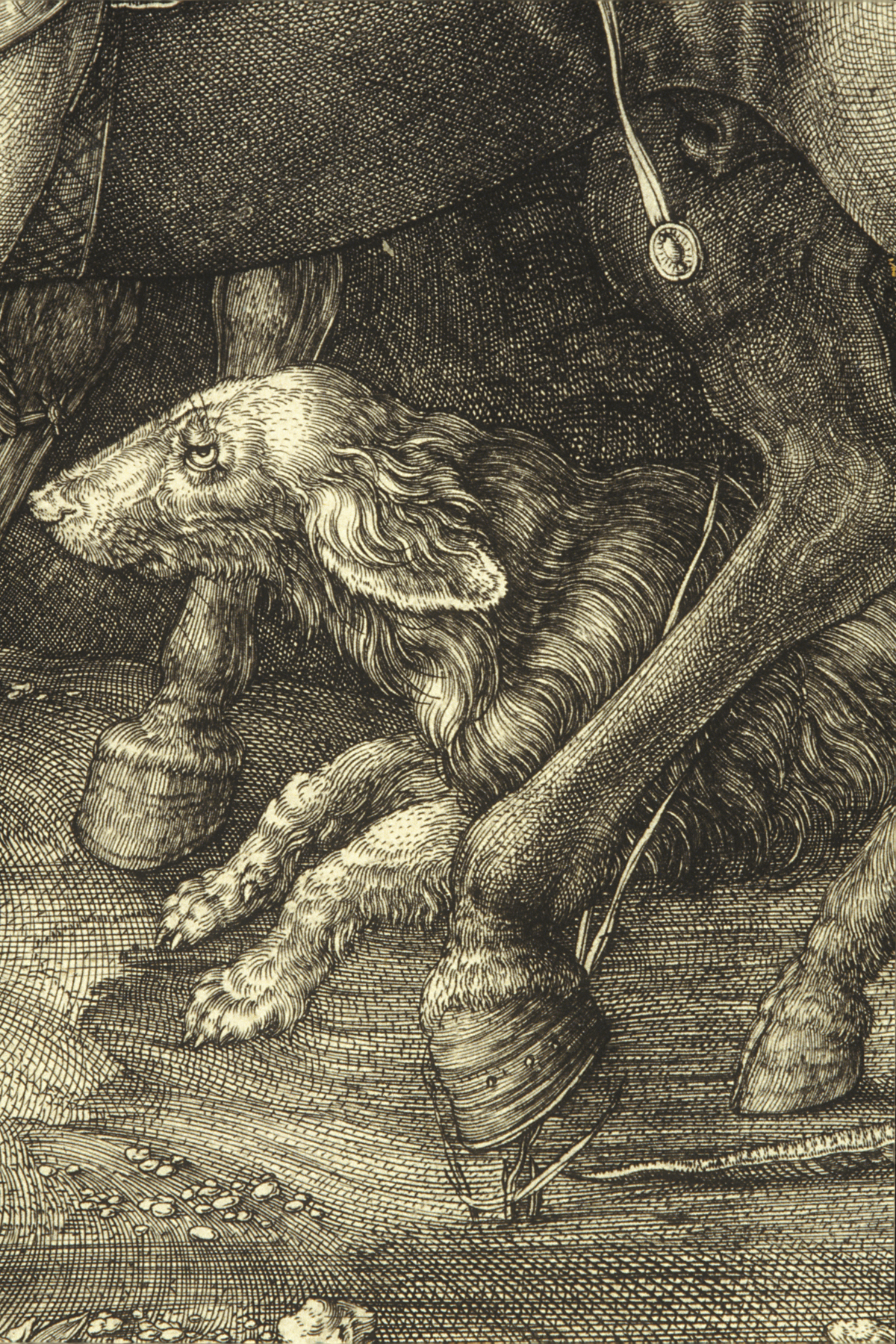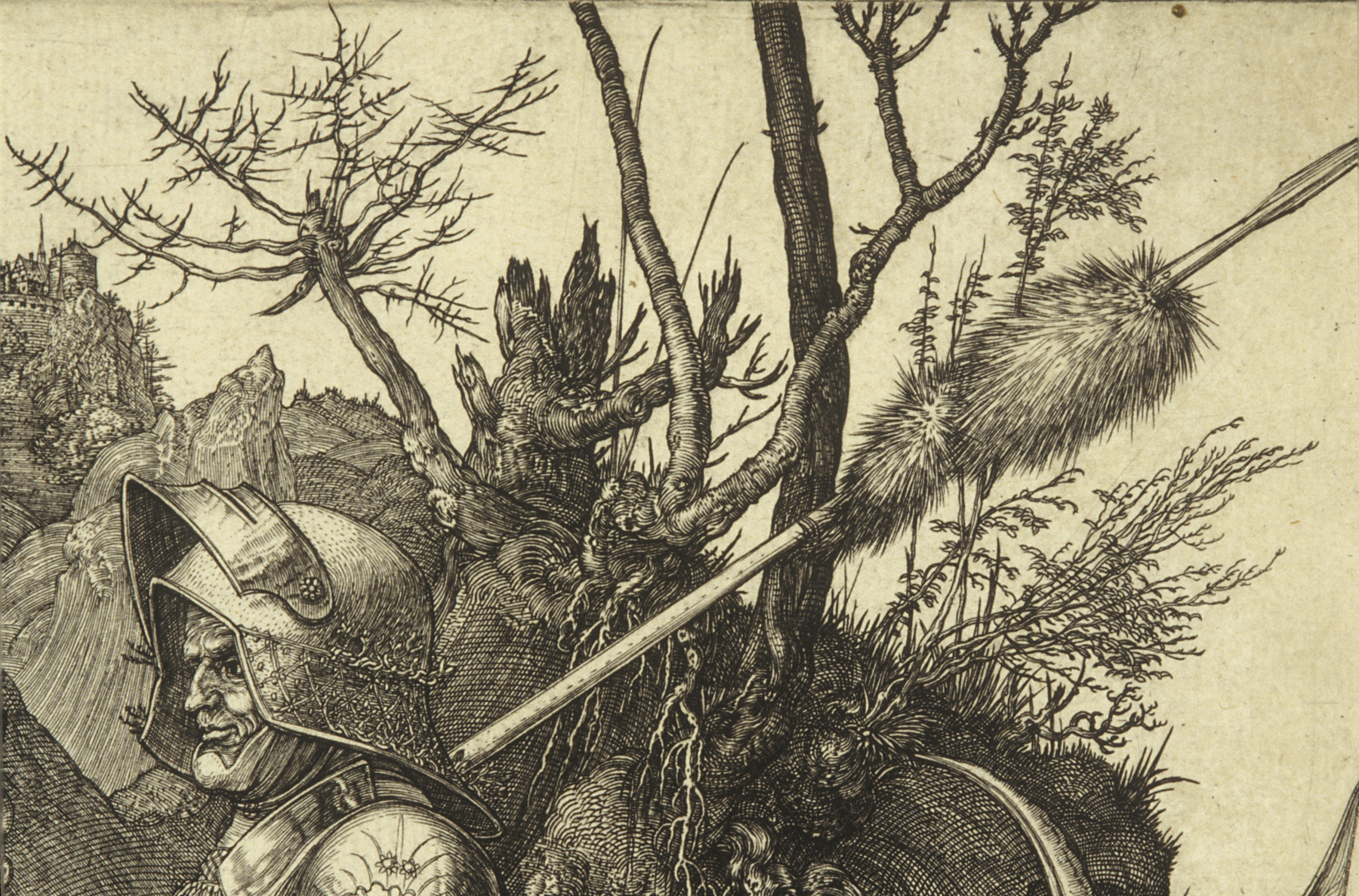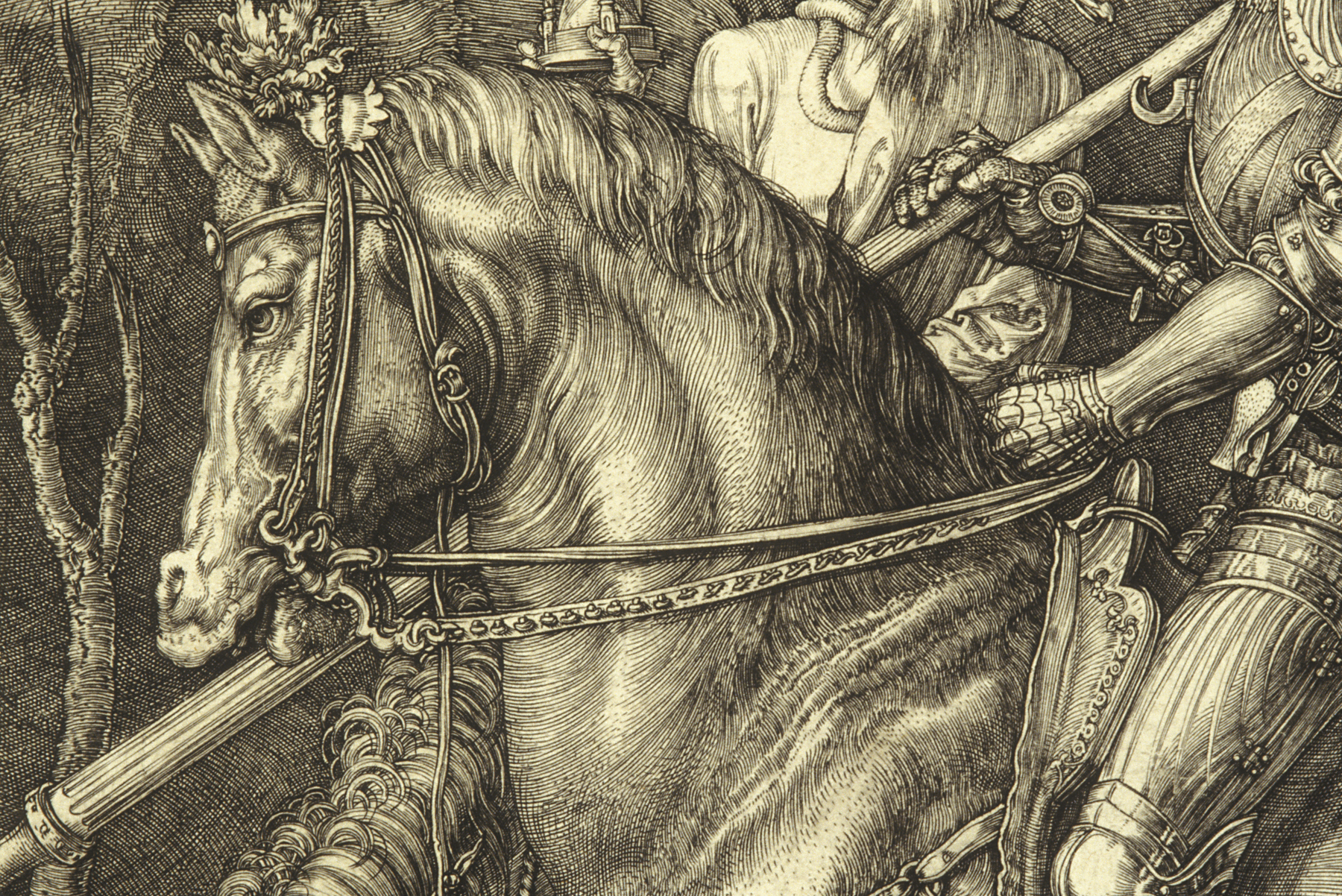Knight, Death, and the Devil, Albrecht Dürer
Artwork Overview
Albrecht Dürer, artist
1471–1528
Knight, Death, and the Devil,
1513
Where object was made: Holy Roman Empire (present-day Germany)
Material/technique: engraving
Dimensions:
Sheet/Paper Dimensions (Height x Width): 245 x 189 mm
Sheet/Paper Dimensions (Height x Width): 9 5/8 x 7 7/16 in
Frame Dimensions (Height x Width x Depth): 19 3/4 x 14 3/4 x 1 1/2 in
Weight (Weight): 5 lbs
Sheet/Paper Dimensions (Height x Width): 245 x 189 mm
Sheet/Paper Dimensions (Height x Width): 9 5/8 x 7 7/16 in
Frame Dimensions (Height x Width x Depth): 19 3/4 x 14 3/4 x 1 1/2 in
Weight (Weight): 5 lbs
Credit line: Gift of the Max Kade Foundation
Accession number: 1969.0091
Not on display
If you wish to reproduce this image, please submit an image request

